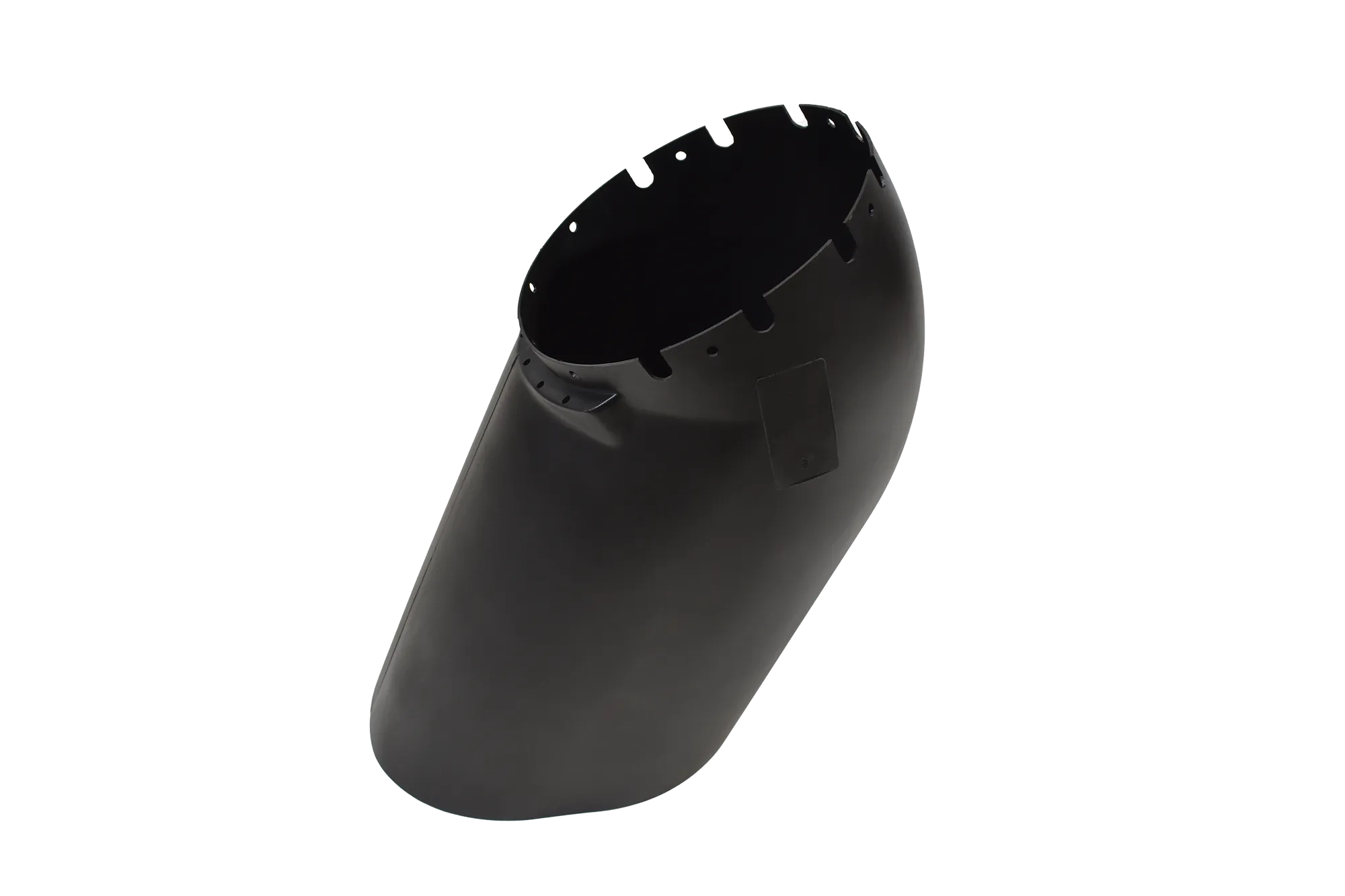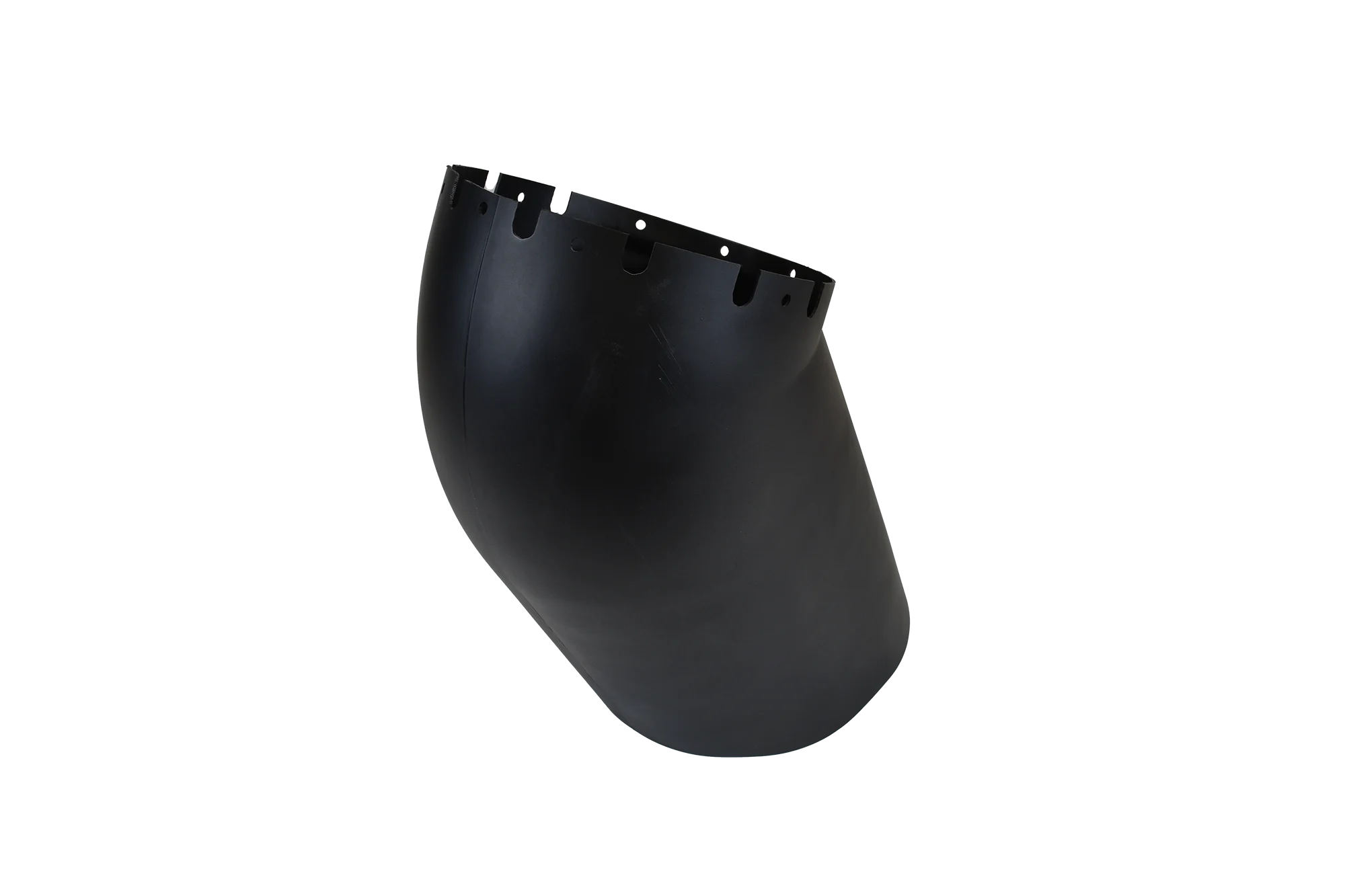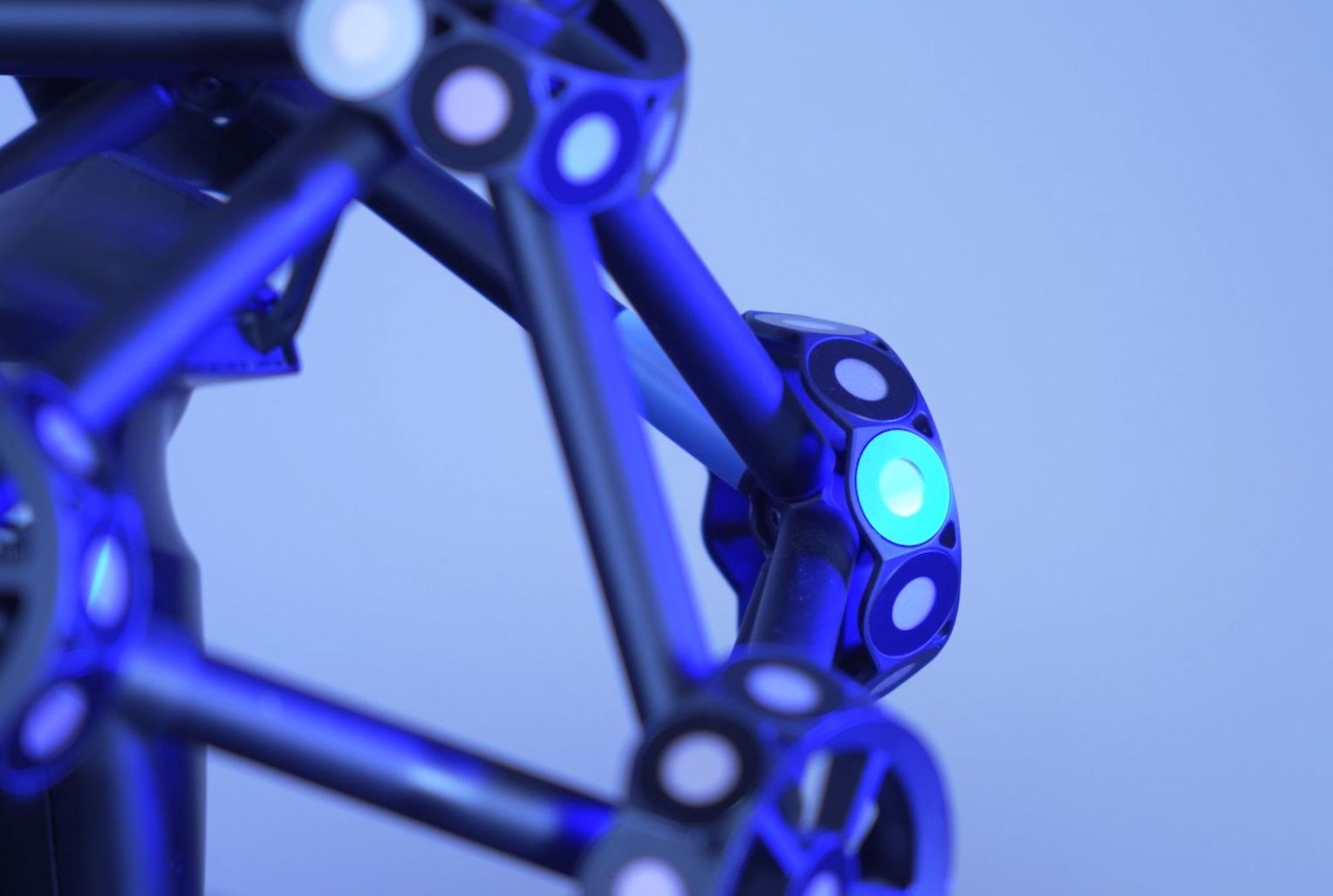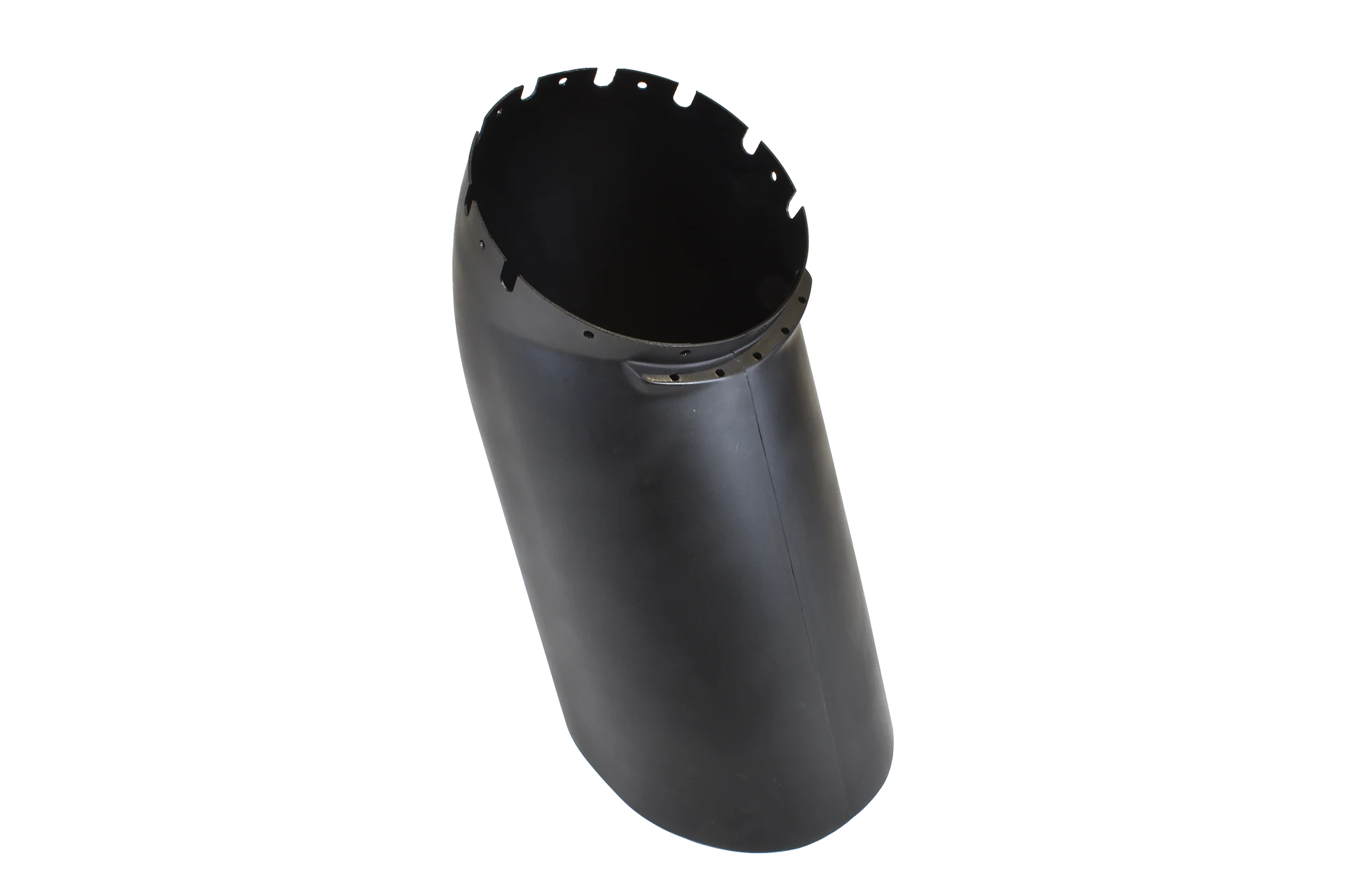Rotomoulded plastic air ducts with organic shapes for optimal airflow
The best example for the way our rotationally moulded air ducts improve machines and products in wind energy is the implementation of plastic air ducts in the cooling systems for wind turbines. For cooling systems in wind turbines, a good performance is of eminent importance. You can think of the cooling of the transformer, the electronics and the air treatment of the entire nacelle. Typical rotationally moulded applications are air ducts, fan housings and filter housings. These functions are often combined in one rotational moulding product. For an optimal and unobstructed air flow an organic design with rounded corners is necessary. This cannot be achieved with the traditional steel angular air ducts. Sharp corners and transitions cause turbulence in the air flow and the cooling performance deteriorates. It is therefore not surprising that the leading manufacturers of cooling systems for wind turbines have chosen to develop air ducts and housings for cooling systems together with Rotovia.


Plastic air ducts - designed for a lifespan of at least 20 years
Wind turbines should be seen as unmanned factories that have to produce power 24/7, without interruption. These turbines are also often located in places that are difficult to reach. At sea, for example. That is why components including airflow components used in wind turbines must last a long time and function fault-free. Rotomoulded polyethylene air ducts are ideally suited for this application. The material is virtually stress-free and indestructible, due to its toughness. It is resistant to impact load and vibrations, and extremely low temperatures down to -40 degrees Celsius. In addition, rotationally moulded polyethylene has a very good chemical resistance. It can withstand salt water very well (important for applications at sea) and it is ozone resistant (ozone is released during power generation). It is also very resistant to oils and greases.
Accurate 3D scanning service for rotomoulded premium products
At Rotovia, we offer a comprehensive 3D scanning service, from physical scanning to post-processing. Our scanning service accurately measures rotomoulded products in 3D, providing extremely accurate measurement data. With this service, our customers not only gain precise 3D models of their custom moulded products, but also the ability to use the collected information in the design or quality control process.
Find out more


Unprecedented design possibilities airflow components
The rotational moulding process is suitable for making hollow or double-walled products from approximately 10 cm3 to a volume of approximately 10,000 litres (products with a diagonal of approximately 5 metres). No pressure is used during the rotational moulding process, which means that very large moulds can be made at relatively low costs. A mould does not necessarily have to be two-part, but can consist of several parts, which means that very complex products, such as plastic air duct, can be designed, which are cast in one piece, whereby the available space in the nacelle of the wind turbine is optimally used. In addition, metal threaded inserts can be placed in the mould in advance. They are then cast along, so that threaded fasteners are solid in the product. Rotovia has several processing robots so that holes and recesses can be milled.
Rotational moulding technology makes it possible to create robust and highly durable airflow components not only for the renewable energy industry but also for industries such as agriculture, building and construction or vehicles. Our production technology has also made it possible to manufacture plastic air ducting for industrial hvac parts – the sanitary engineering industry, which deals with heating, ventilation and air conditioning.
The use of the highest quality materials in production guarantees that our products meet all necessary standards, and thanks to the flexibility of our manufacturing process, we can produce air ducts and industrial hvac ducts of various shapes and sizes. Our many years of knowledge and extensive know-how allow us to produce airflow components perfectly tailored to the needs of customers in various industries.

Jort
Account Manager
"Everything should be made as simple as possible, but not simpler"
your idea
to life. Start now!


